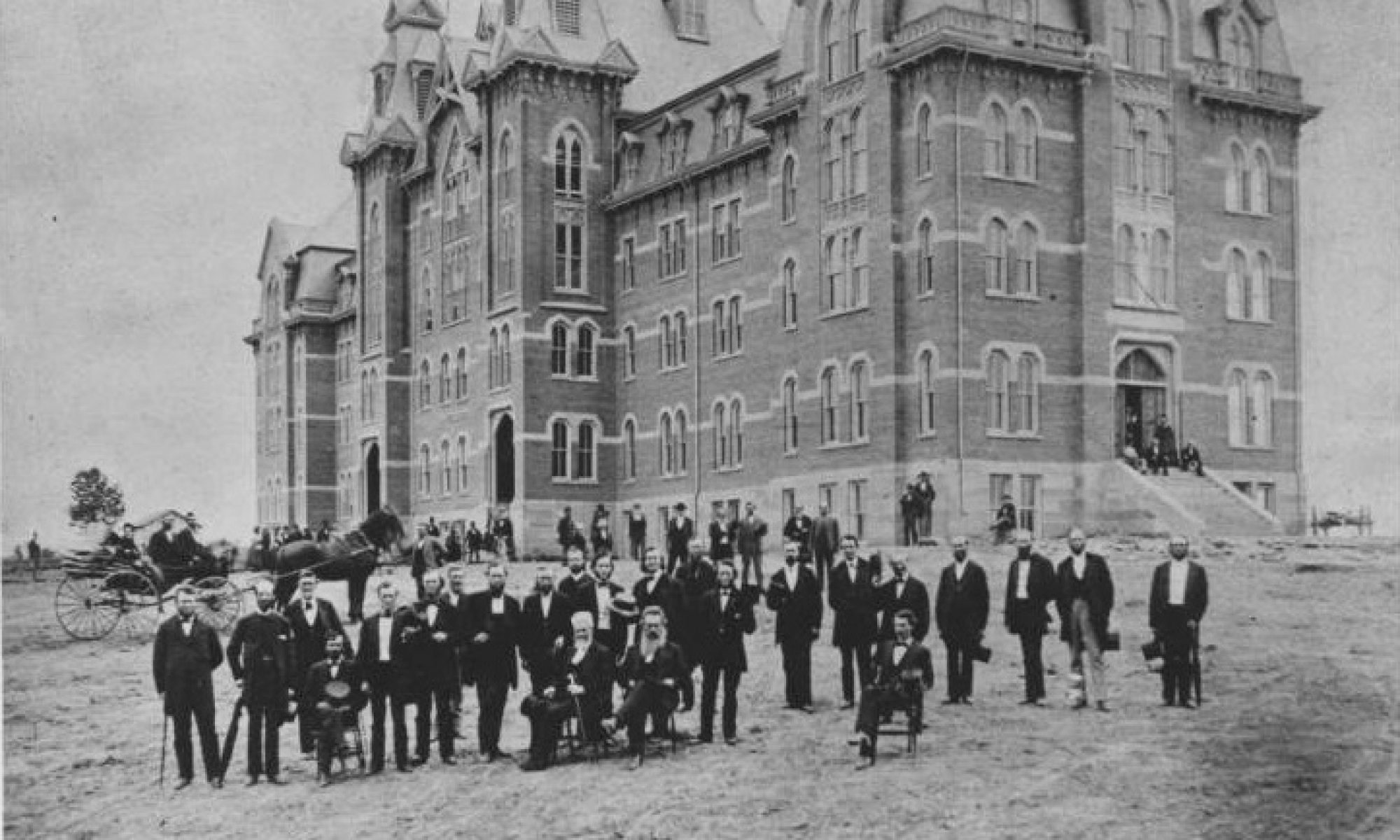Introduction | The Founding | The Founders | The Universalists | The Building | The President and the Faculty | The Students and the Curriculum | The Flourishing
The selection of the first president of Buchtel College was a serious task. The president was to preside over the faculty, who, in turn, were charged with determining the curriculum, standards and discipline of the institution. The president served as a court of appeals from faculty disciplinary decisions, raised money, and publicized the school by preaching and speaking. He was also expected to teach; preside at daily chapel exercises, commencements and special events; and to preach Sunday sermons.
In March 1872, the Board of Trustees unanimously chose Rev. Sullivan H. McCollester, a Universalist minister from New Hampshire, as the first president of Buchtel College. McCollester spent the summer planning a curriculum, working out a schedule prospectus and assisting in recruiting a faculty. When the school opened in September, these tasks were accomplished and the new enterprise was under way.
The faculty that had been assembled to instruct the new student body was small but diverse. Only seven faculty members were on hand to teach two collegiate programs, two preparatory courses, one normal course and various “irregular” student programs. As professor of intellectual and moral philosophy, McCollester was the leader of the faculty. The most notable early faculty members were Dr. Carl F. Kolbe (modern languages), Dr. Charles M. Knight (chemistry) and Dr. Elias Fraunfelter (mathematics). The trio was so important to the founding and growth of the institution that the late Dr. George W. Knepper, University Historian Emeritus, called them “the great early triumvirate.”

Photograph from The University of Akron Photograph Collection in Archival Services.
Sullivan H. McCollester, a Universalist pastor from Marlboro, New Hampshire, was the first President of Buchtel College. He was a graduate of Norwich University and Harvard Divinity School. McCollester served as principal of four academies and seminaries in New England before coming to Akron. He was installed on September 22, 1872, and served until 1878 when he resigned due to financial difficulties at the college and a rift that had developed between the college and the Universalist congregation. Perhaps his most important accomplishment was assembling the school’s first faculty, many of whom served Buchtel College with distinction for years.
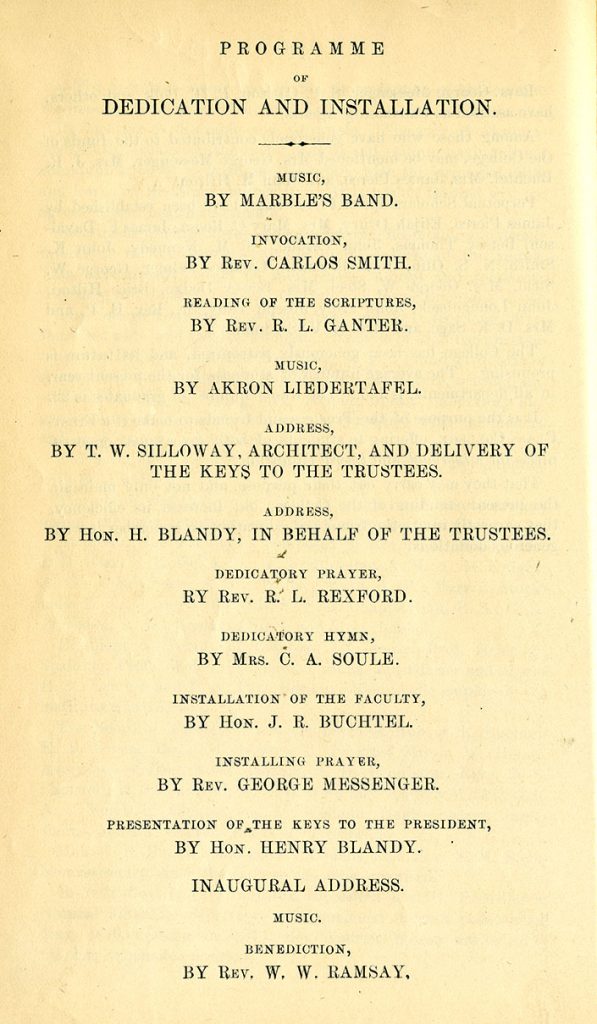
From The University of Akron Vertical File Collection in Archival Services.
Buchtel College proclaimed its establishment on September 22, 1872 by dedicating its new building and installing its first president, Sullivan H. McCollester. Many of the college founders attended and took prominent roles at the event. Rev. Everett L. Rexford delivered the dedicatory prayer, and John R. Buchtel installed the first faculty. Rev. George Messenger delivered the installing prayer and Henry Blandy performed the presentation of the keys to the new president, who gave the inaugural address.

From The University of Akron Publications Collection in Archival Services.
Buchtel College’s first President, Rev. Sullivan H. McCollester, was installed with great fanfare on September 22, 1872. His inaugural address, the first page of which is seen here, was titled “The Educational Demands of the Nation.”

Photograph from The University of Akron Photograph Collection in Archival Services.
Rev. Everett L. Rexford was born in Harmony, New York in 1842. He was educated at the Jamestown Academy and St. Lawrence University, graduating around 1865. He served as pastor in Universalist churches in Cincinnati, Columbus, and San Francisco. As a member of the Committee on Education of the Ohio Universalist Convention, Rexford helped select Akron as the location for what would become Buchtel College. He also served as a corporator and a member of the Board of Trustees from the beginning. When President McCollester resigned in 1878, Rexford became his successor, serving as second president of the institution until his resignation in 1879. During Rexford’s presidency he paid off the college’s debt, reorganized the faculty, revised student rules, and healed a breach with the local Universalist congregation.
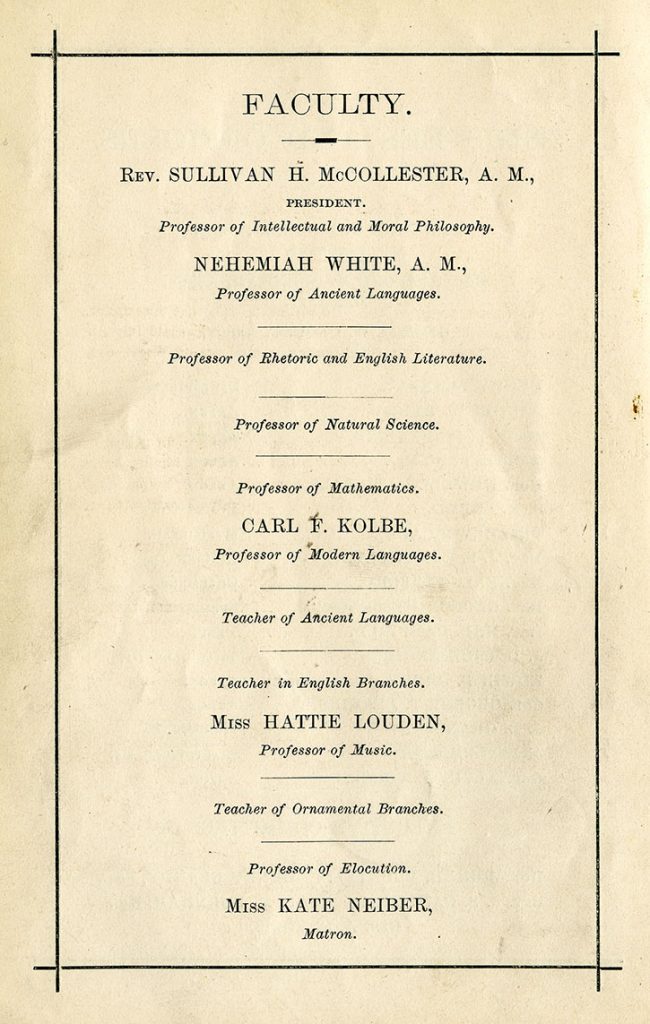
From The University of Akron Publications Collection in Archival Services.
In addition to hiring a president, the college founders had to assemble a reputable faculty. This page from the first Buchtel College Catalogue lists some of the inaugural faculty at the institution and their teaching duties. Since John Buchtel and the Universalists were very progressive, especially for their day, they included women on the first faculty of the college, including Miss Hattie Louden, Professor of Music and Elocution.
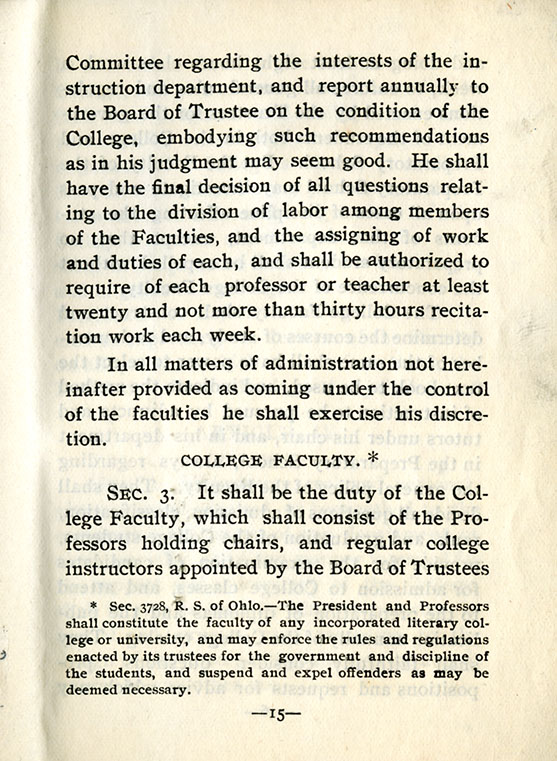
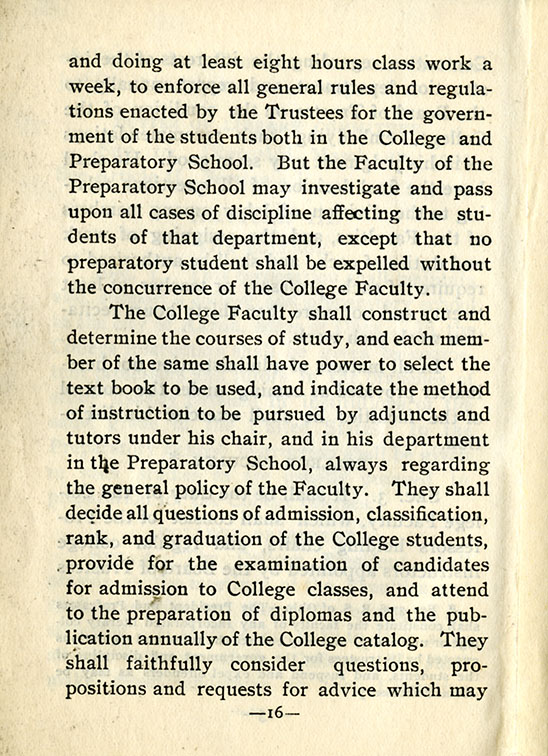
From The University of Akron Publications Collection in Archival Services.
These pages from the Bylaws of Buchtel College outline the duties and responsibilities of the first college faculty. In addition to eight hours class work, this included a long list of duties such as enforcing the rules and regulations of the college, developing the curriculum, preparing the diplomas and the catalog, reprimanding students, and counseling the president, among other things.
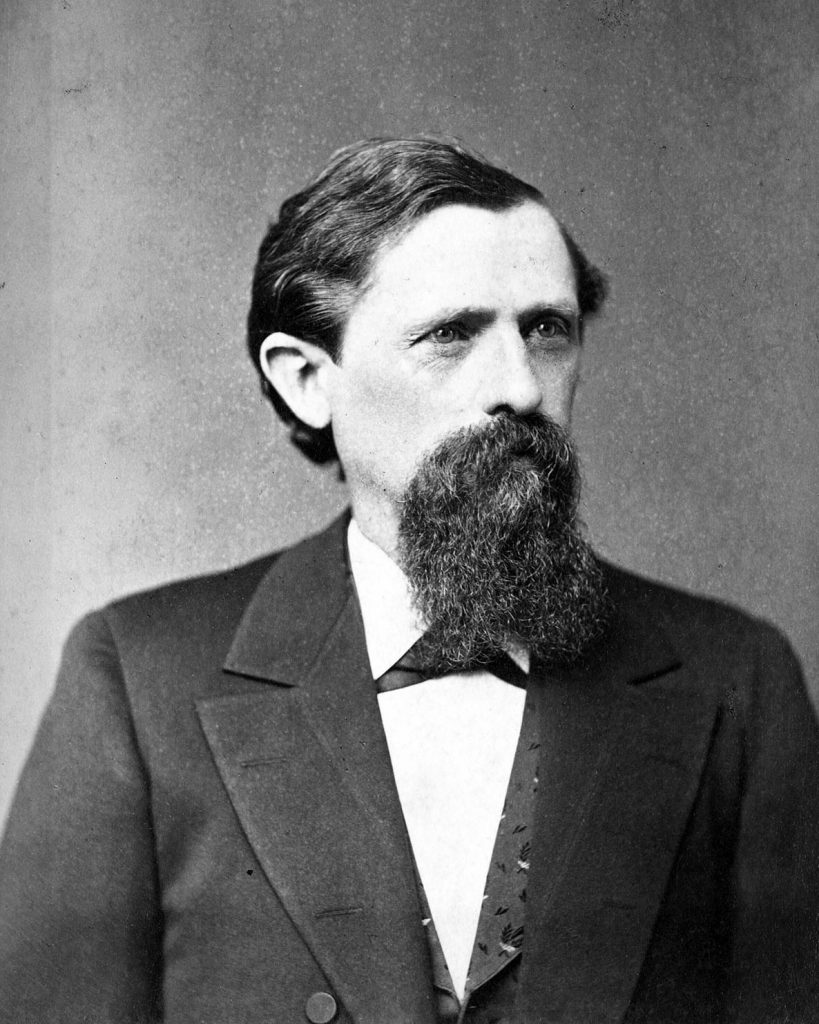
Photograph by B. F. Battels, Akron, Ohio. From The University of Akron Photograph Collection in Archival Services.
Elias Fraunfelter was one of the first professors at Buchtel College. A former captain in the Union Army, he earned his A.M. at Bethany College and his Ph.D. at Lombard University. He came to Buchtel College in 1873 as teacher of applied mathematics and the following year was made the regular professor of pure and applied mathematics. Fraunfelter was one of the first faculty members credited by the students for preparing them for their careers. As one student later wrote, “Professor Fraunfelter was a great teacher. Indeed, I may say . . . that he was the greatest teacher I had every known.” Fraunfelter left Buchtel College after 10 years to become superintendent of the Akron Public Schools, where he continued to be a constructive force for education in the community.
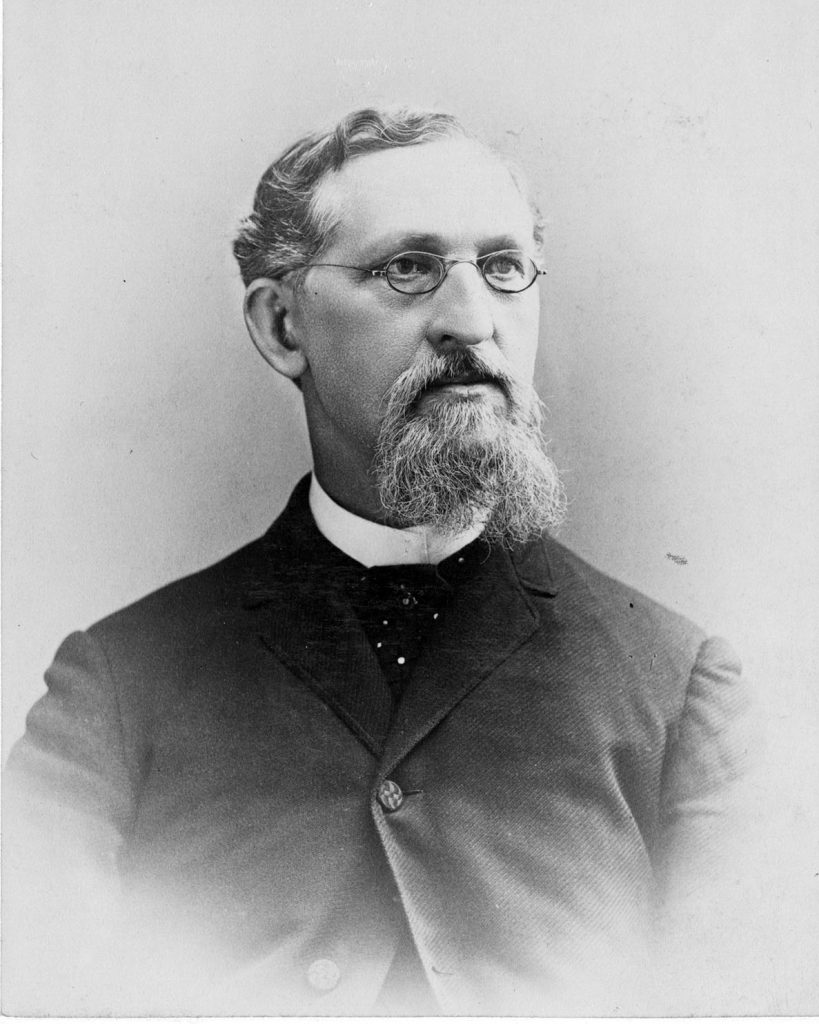
Photograph from The University of Akron Photograph Collection in Archival Services.
Carl F. Kolbe was one of the first professors at Buchtel College, beginning his work with the opening of the school in 1872. He was born and educated in Germany. Kolbe served as a bandmaster in the Union Army during the American Civil War. He came to Akron to publish the Akron Germania, a German-language newspaper, but was persuaded by John Buchtel to accept the position of Professor of Modern Languages at the college. Kolbe served the institution for 33 years and earned the respect and affection of his students. His son, Parke R. Kolbe, would serve the school with distinction as its president from 1912 to 1925. Carl Kolbe was so important to Buchtel College that when he died in 1905, classes were suspended for the remainder of the week and the buildings were draped in black.
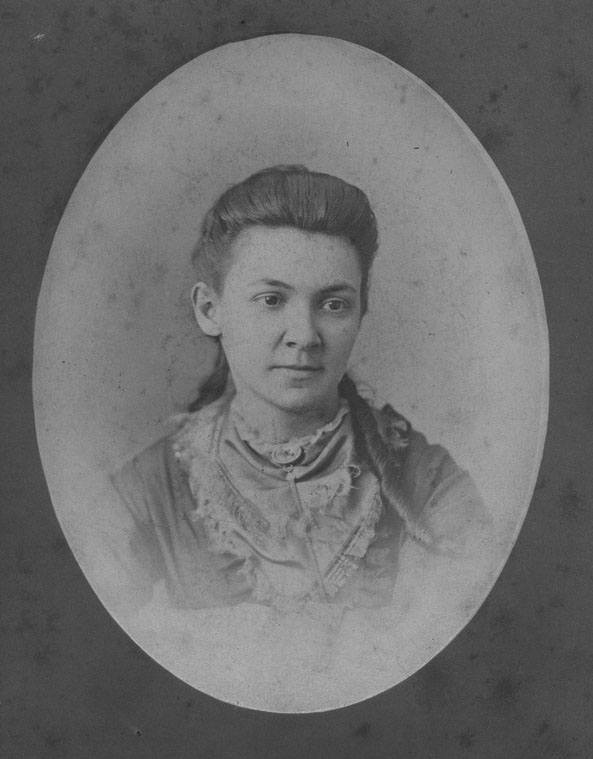
Photograph from The University of Akron Photograph Collection in Archival Services.
In addition to Hattie Louden, one of the earliest female professors at Buchtel College was Sarah Glazier, who taught Natural Sciences. Other early female faculty included Inez Shipman, Jennie Johnson, and Minnie Fuller. Professor Johnson taught music while Professor Fuller taught in the Art Department.
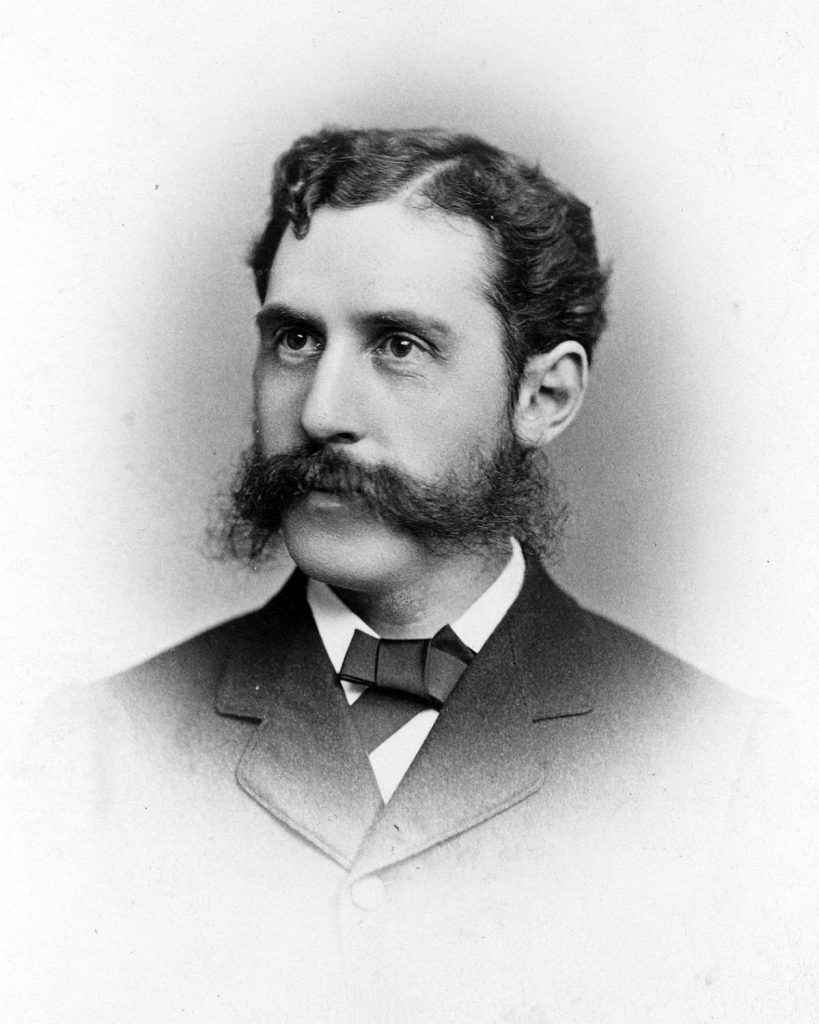
Photograph from The University of Akron Photograph Collection in Archival Services.
Dr. Charles M. Knight came to Buchtel College in September 1875 to take charge of all science instruction. He later focused on physics and chemistry. He introduced laboratory work to Buchtel, built the first science laboratory, and is best remembered for teaching the world’s first college courses in rubber chemistry. For years, he served the emerging rubber industry as a consultant. When President Orello Cone resigned in 1896, Knight became interim president, a position he would hold until the following year. In 1908, the Board of Trustees named the new science building after him—the Knight Chemical Laboratory. Knight helped raise funding for the building and was also instrumental in the creation of The Municipal University of Akron. He retired in 1913, but his legacy lived on. Many of the chemists and engineers trained by Knight would go on to distinguished careers and some worked on the development of synthetic rubber and other products during World War II.

